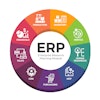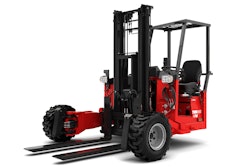
In today’s digital world, technology supports every step in the supply chain process from sourcing, product development, ordering, and production, to quality, compliance, and sustainability management. However, even the most smoothly operating supply chain can be slowed down by legacy technology. Cloud technology is the key to success. It has emerged as a game-changer for supply chain management, with the market projected to reach USD 8.61 billion by 2026.
Challenges in adopting a legacy SCM cloud
Creating a successful cloud-based solution for supply chain comes with challenges, including data integration, interconnected ecosystems, security/privacy and scalability.
- Data Integration: Integrating data from various sources and systems to establish a unified view of the supply chain is complex due to diverse formats and legacy systems. Use digitization to stress-test the operations and plan response strategies.
- Interconnected ecosystems: Developing an interconnected ecosystem that facilitates seamless communication and collaboration between organizations requires common standards and integration with legacy systems. Business can overcome information blind spots by collaborating more closely with supply chain partners.
- Security and privacy: Security and privacy is of major concern and must be addressed to protect data and comply with regulations. In addition to protecting data from external threats, it is also important to ensure that data is handled in compliance with relevant regulations and standards. This includes complying with data protection laws such as the General Data Protection Regulation (GDPR) in the European Union, which sets strict standards for the collection, processing, and storage of personal data.
- Scalability: It is vital to adjust resources according to changing consumer demands, market trends, supply chain regulations and business requirements. Shifting to cloud-based solutions enables companies to expand at their own pace and in their own way. This is especially beneficial for companies that are in the process of digitizing their operations and supply chain systems.
Cloud Continuum
Despite these challenges, many companies have successfully transitioned to cloud-based solutions to manage their supply chains and achieve greater speed, agility, scale and visibility. Instead of being a final destination, the cloud is now seen as a continuum of abilities that can assist businesses in developing new and effective ways of operating.
Characteristics of a Successful Cloud-Based Supply Chain Solution
Effective cloud-based supply chain solutions have key features such as easy-to-use interface with low-code capabilities, end-to-end visibility, and the ability to adapt to regulatory compliance requirements. Successful solutions feature:
- Easy-to-use interface with low-code : A user-friendly interface and low-code capabilities are essential for a successful cloud-based supply chain solution. This allows users to easily navigate the system and perform tasks without requiring extensive technical knowledge. This empowers your business users. With a low-code platform, business users can create, test, and deploy custom applications quickly and easily, without the need for extensive coding knowledge. Additionally, a low-code platform can help bridge the gap between IT and business users, enabling them to collaborate more effectively and achieve better results.
- End-to-end visibility: End-to-end visibility is another important feature of a successful cloud-based supply chain solution. This allows companies to track their products and materials throughout the entire supply chain, from sourcing to delivery. Cloud computing allows speed, agility, scale, and visibility, as well as the ability to quickly adjust computing resources, develop and deploy new applications with reduced development and deployment costs, integrate with a new stakeholder and make informed decisions more quickly.
- Adaptation to regulatory compliance: Adaptation to regulatory compliance ensures that companies follow the laws enforced by governing bodies in their geography or rules required by voluntarily adopted industry standards. Cloud-based solutions can help companies move beyond their current supply chains and create powerful new operating models. Automating the collection and reporting process means fewer resources are required and a lower cost of compliance. All the required data can be made available on a single platform accessible to all authorized users.
Five Tips for Supply Chain Success
To make the most of cloud technology for your supply chain, we recommend five best practices.
1. Select a cloud service provider that meets your supply chain requirements.
2. Integrate cloud technology with your existing supply chain systems for seamless interoperability.
3. Leverage cloud technology to enhance supply chain visibility and collaboration.
4. Automate and streamline supply chain processes using cloud technology.
5. Use cloud technology for data analysis and optimization to make informed decisions.
By following these best practices, companies can optimize their supply chain management, improve responsiveness, and navigate market changes effectively. Cloud technology empowers businesses to achieve competitive advantages and drive success in the ever-evolving business landscape.




















